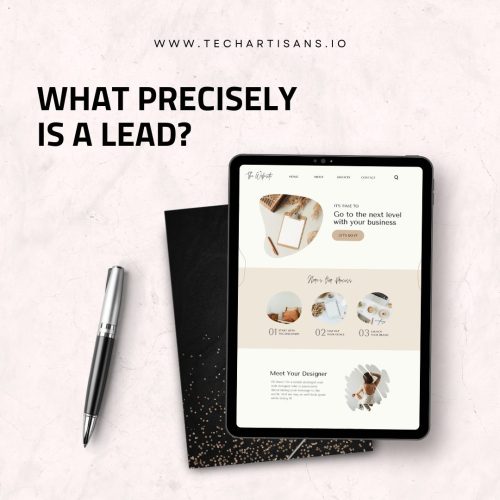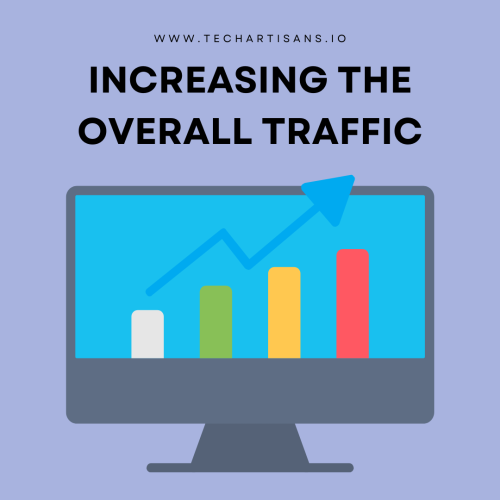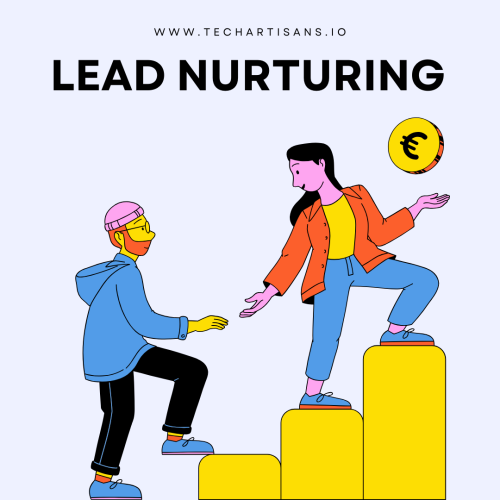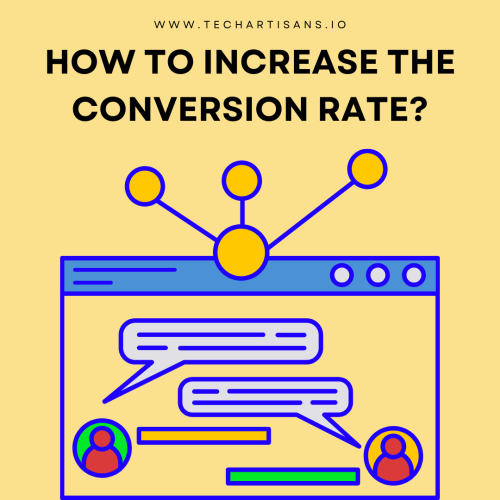Lead generation is not just generating more leads, it is generating the right ones. Your marketing efforts and search engine optimization must be designed to generate qualified leads. Lead generation and lead capture are important tasks, and the focus must be on generating the right and worthy potential leads.
Is your website catching the right leads? Reading this article will help you gain some clarity!
What precisely is a Lead?
A lead is an organization or a person that shows interest in what you’re selling and maybe a customer in the future. A Lead is the first step in the sales funnel of your business, after which the prospect turns into a potential customer and then a customer, once he buys from you.
A person’s attention is one of the most valuable assets, and when you have the attention of a person, you have a lead.
Do you need more leads?
Yes, you do. More leads are good. Generating leads is the first step of the sales funnel. Constant new leads are required to increase sales in businesses. Capturing leads should not only be focused on generating leads but should be on generating the right ones. More the leads, the better. But your marketing efforts should not just be on generating more leads, they should be focused on the quality of the leads too
Are all Website visitors leads?
No, all of the website visitors are not leads. Some of them may be your existing customers, some of them may be your past customers, and some of them could have been there by mistake.
A lead is a potential customer that responds to calls to action. Giving in a contact number, subscribing to your emails, asking a query about your services or products, or just showing interest in your website.
Lead generation
Lead generation involves a lot of tactics and strategies. Companies and Businesses must design a process that helps them track and generate leads.
If correct leads are being generated and managed, these leads have a greater chance of moving down the marketing funnel and becoming loyal customers. Landing pages are the first thing website visitors and users see and they play an essential role in generating leads.
What you need to do for your website is understand your potential customers and target audience first. Only then you can understand what kind of leads are right for you and what kind of leads are a waste of time and resources.
Once you understand your target audience and your potential customers, you will understand that more visitors to your website isn’t always a good thing. While it never hurts to have more visitors to make money, you need the right kind of visitors.
Following are some steps that you can take to enhance your lead generation process:
- Understand the target audience
- Create attractive and relevant content
- Work on increasing the overall traffic
- Work on converting the visitors into leads.
Step 1: Understanding the target audience:
A custom-designed target audience is crucial in lead generation and ultimately getting more sales. If you understand and decide on your target audience after due diligence and thorough research, you are headed in the right direction.
Not all services are for everyone, for instance, an online cab service will target the audience that travels frequently on such cabs, and expensive business class airlines will target a rich segment of society who travels intercity and inter-country frequently.
Brand awareness is one thing, and should be focused on as much as possible, but people who are aware of your brand or website don’t necessarily mean that they will use it.
This step is about recognizing the prospective customers, people who are not only aware of your brand but are able and willing to buy from it. These are the people you should focus the majority of your efforts on. These kinds of people are useful and fruitful leads.
Step2: Creating attractive and relevant content:
Creating attractive and relevant content is an essential part of building and running a successful website. This may be done by displaying positive online reviews, writing a blog post, or working on email marketing.
Whatever medium you choose, you must provide some valuable information on your website, that will result in good lead generation.
Consider that a user visits your page with some interest, if this page has the right content, relevant information, some additional information, and some details about the company and industry, this person might become a lead, and then a customer.
Step 3: Increasing the overall traffic:
Increasing overall traffic on your website gives you the power to decide which ones of these visitors are good leads and potential customers, and which ones are not. The more, the better.
Consider, for instance, that you only have 100 visitors on your website a day. Now 20 of them may be good leads, and only 5 of them may buy from you. But if you work on increasing the overall traffic, and take it to 1000 per day, you will have 200 good leads, and 50 buys, if the same conversion percentage stays in play.
Understand the difference? More traffic on a website or page means more clients.
Step 4: Converting visitors into leads:
Getting visitors to a website is one task, and after that, you have to convert these visitors into leads. This is one of the most important tasks for any business.
This is done firstly by providing all the important and relevant information so the interested people may proceed forward, and the people who aren’t interested are no longer your concern.
To do this, you must build trust and free the visitors from any doubts and confusion. Provide the details where necessary.
Creating a strong call-to-action button is the way forward here. On the landing page, if the information is given and call-to-action buttons are present such as contact information, email or phone number, a subscription button, an “enable notifications” button, or any call-action cta button that allows the visitor to show interest in your business website converts the visitor into a lead.
Step 5: Lead Nurturing:
After you have good leads, lead nurturing is the next step. Lead nurturing is the process of creating and maintaining good relationships with your prospective customers and leads.
If done right, these leads will be your customers and then loyal customers real soon
Generate leads (The right ones);
Through the steps described above, leads are generated. But how do we know that the leads that are being generated are the right ones? Or are not the right ones?
Through conversion rate!
What is the conversion rate?
Conversion rate is the number of leads being converted into customers. For instance, if 8 out of 20 leads are being converted into customers, it is better than 2 out of 20 leads being converted into customers.
It means, in the case of 2 out of 20, the leads were bad in the case of 8 out of 20, the leads were better. The conversion rate is rarely 100% but the higher it is, the better the leads are.
So, in a way, you can never force the conversion rate to be higher, you can work on nurturing your leads, but you can not force people to buy from you if they are not even interested. It takes less effort and time to convince someone to buy if they are already interested first.
How to increase the conversion rate?
If you can not force people to buy from you, how can you increase the conversion rate? You’re right! You ought to improve the quality of the leads that you are generating. If the quality of the leads is improved, the conversion rate is automatically increased.
A litmus test of the right leads:
So in a way, the conversion rate is a litmus test of the quality of the leads that you are generating A low conversion rate means bad leads and a high conversion rate means good leads.
So if your conversion rate is dropping or is low, you need to work on improving the quality of your leads. Sounds simple?
But how do you get the right leads?
Once you have analyzed the quality of your leads, you will come to three possible conclusions.
- Your leads are just fine.
- Your leads are fine but can be improved.
- Your lead generation needs drastic improvements.
In the first case, you don’t need to do anything for now, just keep an eye on the market, current market trends, and your target audience for any future changes or improvements that you need to make, but for now, you are doing fine.
In the second case, usually, your leads are good but if you think there are some improvements in the leads generation process, feel free to make them
The last case is the one where any business or website needs to work, and it needs to work fast and smart. Because if not taken care of, this can be the death sentence for a business.
If the right leads are not being generated, as explained before, it means fewer customers and fewer customers mean less revenue and that is bad.
But how do you improve?
The answer to this question is simple, analyze your target audience, then analyze your current lead generation process, you will usually find a good gap between the two.
For instance, If your target customers are rich frequent air travelers and in your leads, you mostly find people who don’t air travel, or students, or anyone else, you need to target your audience right. You need to thoroughly analyze the product or service that you’re offering and then very clearly and concretely define the target audience. Only then you can make informed choices in your marketing strategies and ultimately get good leads.
So that pretty much sums it up.
Conclusion:
So is your website catching the right leads? The article answers the question. The article also sums up the steps to generate leads, the litmus test of the right leads, the conversion rate, and the overall importance of the right leads.
If your site is catching the right leads, lead nurturing will be easier and the ROI will be higher on the marketing efforts. If the site is not catching the right leads, ROI will be low on marketing efforts and will make things slow and expensive, which is the last thing any business wants. To avoid these problems, you need to make sure that your website is catching the right leads.
Your target audience is already looking for you and wants you, whether they know it or not, your job is to make sure that they find you!















